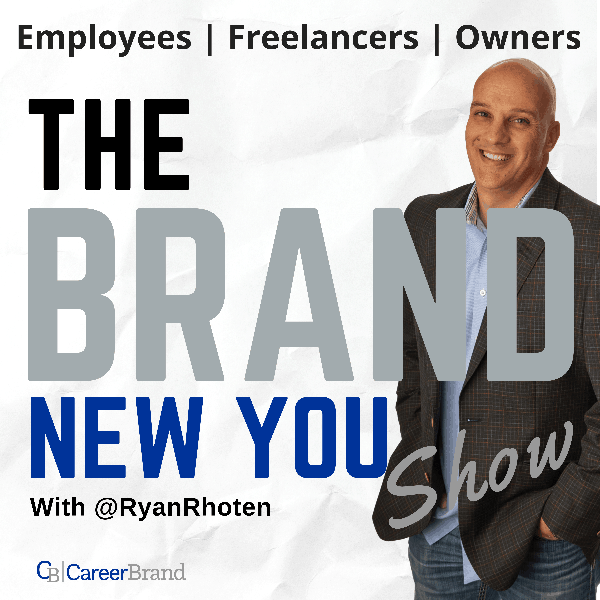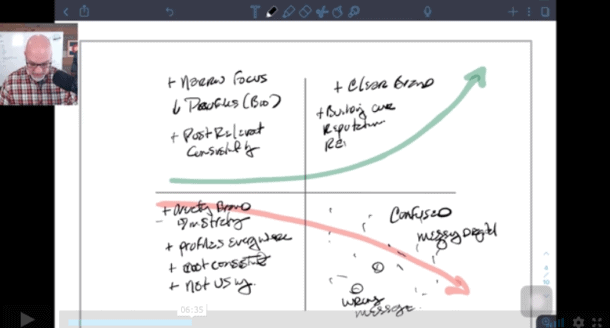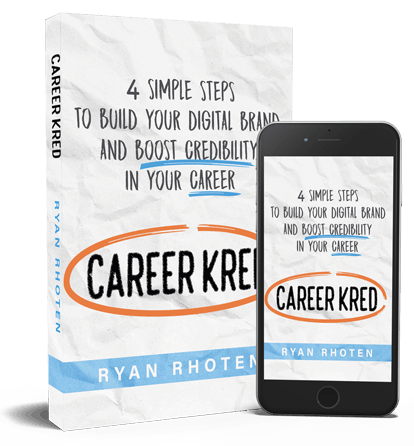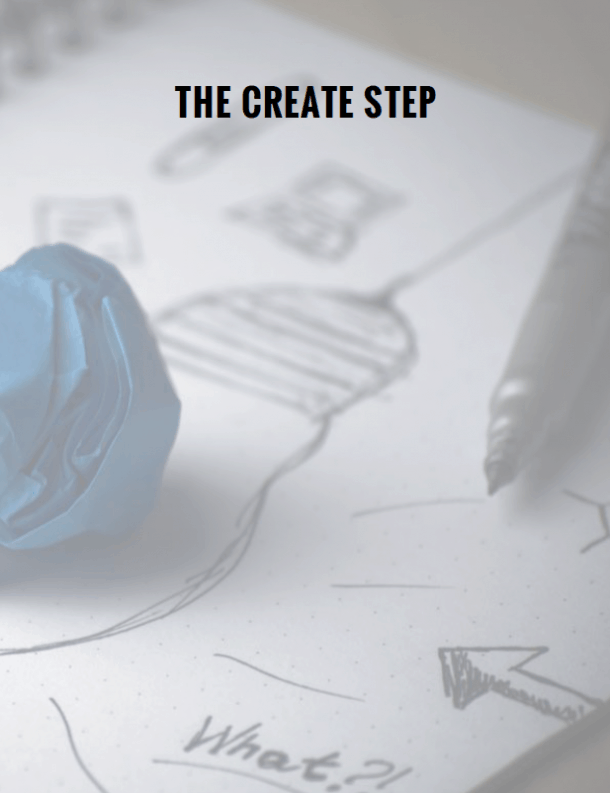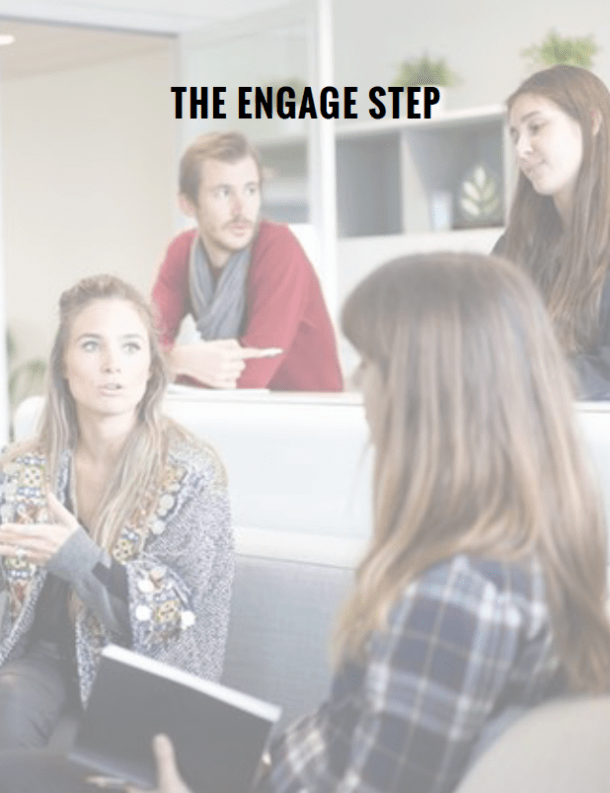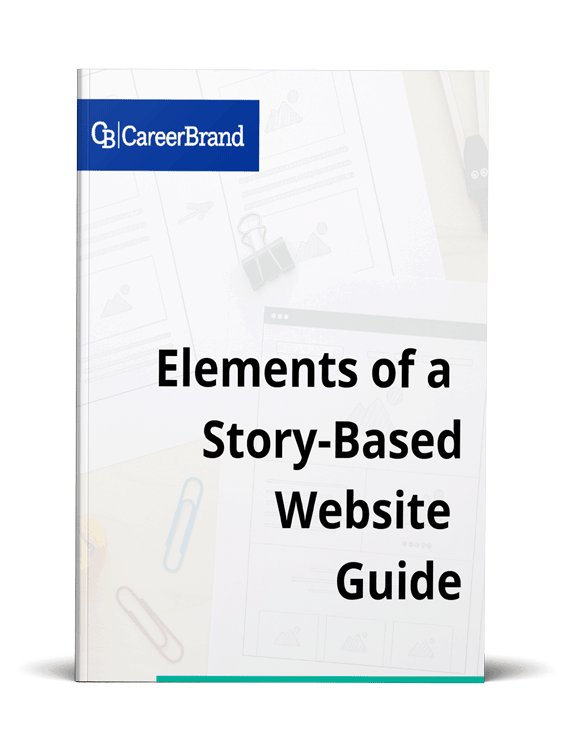how to start a podcast.
Episode #50 of The BRAND New You Show
[smart_track_player url=”http://traffic.libsyn.com/thebrandnewyoushow/How_to_start_a_podcast.mp3″ title=”How to start a Podcast” artist=”Ryan Rhoten” color=”f5811f” download=”false” social=”true” social_twitter=”true” social_facebook=”true” social_gplus=”true” social_linkedin=”true” social_stumble=”true” social_pinterest=”true” social_email=”true” ]
DISCLAIMER
Before I dive in Here's my disclaimer for today's show. This is my version of how to start a podcast based on my experience. Are their other ways, yes, of course, there are. Other podcasters may give you different advice, that's fine. Listen to them as well.
But this is the way I would coach someone who wants to start a podcast. With that let's get started.
To me, a podcast starts way before you ever spend your first dollar. And yes. It costs money to have a podcast and I'll share with you those costs along the way.
In my mind Your podcast starts by answering this question:
What's your podcast going to be about and how will it add value to your listeners?
CHOOSING THE TOPIC FOR YOUR PODCAST
Let’s say that because you are an idea machine like Claudia Alutcher from show 41 and you decide you want to do a podcast on pets.
This is great but what type of pets will your show be about? Cats, dogs, rabbits, giraffes (ok I made that one up I don’t know if you can have a giraffe as a pet) Maybe you are a zoo keeper and your show will be about all of these animals.
Now ask yourself how will your podcast add value or help your podcast listeners?
Take this show for example. It’s my goal and my mission to help each one of you listening build your personal brand, and grow your influence so you can ultimately Impact your career by providing you with the tools and tactics you need to become visible in this digital age.
How your career is impacted is up to you.
You may decide to use the tools and tactics we discuss to advance within your current company. You may decide to elevate your creative side and start a side business or begin freelancing, or you may decide to become a solo-preneur.
Like I said how you deploy the information in this podcast is ultimately up to you. But I want to provide you with the tools you need to create a brand new you.
FORMAT OF YOUR PODCAST
Solo, or interviews. You could also do a combination of the two or even a variety based show with different segments it's up to you.
From a level of difficulty standpoint, solo shows are easier to put together. Essentially it’s just you talking into a microphone. However, there is work that goes into a solo show such as researching your topic and if you’re so inclined scripting out your show. This is what I do.
Do you need a script? No. I know people who literally just hit record and start talking. I wish I could do this but writing out the podcast helps me vet out all of my ideas. This takes time but again it’s not necessary. It’s a matter of personal preference.
Then there are the Interviews which as you know make up close to 90% of this podcast. I’m just going to say it, adding a fellow human being to your podcast is much more difficult than a solo show.
For solo shows, you just have to show up. Interview shows require you to find guests, schedule guests, and interview guests.
Here's a piece of advice I'll give you if you decide to do an interview show, you need to be 200% prepared for the interview and be 100% prepared for your guest to cancel at the last-minute. To make this worse, it will almost always happen when you have no one else lined up to interview and you still have a podcast to deliver the following week.
This is going to happen. It's happened to me more than once and I promise it will happen to you as well. Face it, life happens. I’ve even had to cancel on my guests before.
Another variable to consider when doing an interview show is preparation. I believe the level of preparation you do for your interview will show up during the interview itself.
For me preparation for my guests includes:
Reading their books, their blogs, subscribing to their email lists, watching their personal videos, videos in which they have appeared. I listen to other podcasts they’ve been on. I stalk them on Instagram, YouTube and Twitter. And of course I search for them on Google and review every search engine return sometimes up to 10 pages deep.
For a typical interview, I will spend between 2 and 5 hours conducting research. This includes the time it takes to read their books.
Excessive? maybe. But it’s what I do. In fact, one of my strengths is Context which Lisa Cummings from the Lead Through Strengths podcast and guest on episode 39, will tell you means I strive to understand how my guests came to be who they are. Knowing their background gives me confidence.
I love nothing more than to make my guests feel valued. I want them to know I respected their time enough to do my homework before I hit the record button. And if I can make them laugh during the show the better.
Believe it or not, I also picture my guest after our interview telling others about what a great experience it was for them to talk with me. I know that sounds weird but I'm practicing affirmations and visualizations as Kathryn Bryant and Julian Illman and I spoke about in show 30.
Your personal level of preparation depends on you. You need to do what works for you, what you're comfortable with.
IDENTIFY YOUR FIRST SHOWS
The next step I recommend people take is if you’re doing a solo show, write down your first 10 shows. If you can't do this go back and review your topic. Don’t start your podcast.
I recommend this step because a lot of people get really excited about doing a podcast, they record 3 or 4 shows and run out of ideas. Don’t let this be you. List out your 10 shows and get started scripting.
If you're doing an interview based show I recommend you list out 50 people you want to have on as a guest and include a one sentence summary of what you'd talk with them about, be it their book, or their subject matter expertise.
I suggest doing this because getting guests can be hard. You need to find them, you need to reach out to them, you’ll need to follow-up with them, etc.. Finding guests for your show is never-ending process once you start the podcast.
On any given week, I have anywhere from 5 to 10 invitation or follow-up emails out in the internet ether. You have to be diligent about this or you will find yourself in the position of not having any guests to interview for your podcast.
Once you have 50 people on a list start stalking them just like we discussed in last week's show on How to use Twitter. Start building rapport with your potential guests. When the time is right and you’ll both know it’s the right time, it will happen.
A couple more steps I recommend you take before starting your podcasts are to listen to other podcasts and seek advice from a podcaster.
When listening to other podcasts take note what you like and don't like. Pay attention the music, the intro, and outro, the questions being asked and the audio quality.
I also recommend you talk to current podcasters. Find out they're like, dislikes, recommendations, and pitfalls. And in case you are wondering, yes they will talk to you. After all, they are podcasters. Talking is what we do.
EQUIPMENT YOU WILL NEED FOR YOUR PODCAST
This should be a no-brainer but you will need a computer, Mac or PC doesn’t matter.
You will also need a Microphone. You will find hundreds if not thousands of articles and videos on which is the best mic to use. But the truth is it really doesn’t matter when you're just starting out.
What matters is that you start.
I recommend starting simple with an ATR2100 (affiliate link)
It’s a USB mic you plug into the USB port on your computer and just like that, you’re ready to record.
The reason I recommend starting simple here is two-fold. First, starting simple prevents you from getting wrapped up in all of the chatter about the best mic to use which could cause you to delay your launch
Second, if you decide you don't like podcasting you're not out a lot of money.
Buy the ATR 2100. It's a great mic for the price. If you decide that podcasting is for you then look at upgrading at some point in the future.
Next you’ll need recording and editing software. There is a great free program called Audacity that you’ll want to download and use.
I started out with Audacity. It works great.
Another option is Adobe Audition. This is the program I use today.
There is another software you can use, but Audacity and Audition are the only ones I’ll discuss here. As I already mentioned Audacity is free. Adobe Audition costs a ton to buy it as a standalone product but you don’t have to. I pay $30 a month to access it via Adobe’s creative cloud. This monthly fee also gives me access to all of Adobe’s programs which I use for other things.
I figured since I was paying for it I might as well use it.
For all of my interviews, I use Skype. Unfortunately, you can’t record your calls with Skype. You’ll need an additional piece of software to do this. I use Call Recorder by a company called eCamm. It costs $30 and works great.
Once installed it opens up with Skype. To start recording just click the red button. When you finish click the button again to stop the recording. It’s that simple.
Every podcast should have cover art. Lack of cover art is the equivalent of the egghead profile picture in Twitter. Please don’t skip this step.
You make your cover art using free programs like Canva and Pic Monkey. I made my cover art using Pic Monkey. Regardless of the program, you use the artwork needs to be a JPEG or PNG file and it needs to be at least 1400X1400 pixels. The max size you can use is 3000 X 3000.
Don’t get to wrapped up in the design of the cover art. If this is not your thing you can pay someone on Fiverr or 48 hourslogo, for example, to do the cover art for you but why when you don't have to. Stick to the free programs.
If you are going to do an interview based show I highly recommend you consider getting a scheduling software.
Could you schedule your guests via email? Sure. However, I will warn you this will take a lot of back and forth emails between you and your guest to find a time that works. Then once you do find a time, you’ll need to get it scheduled. Trust me this is a hassle.
A better way is to use a scheduling software. Personally, I use ScheduleOnce. There is a free component to it but if you start getting multiple guests signed up you’ll want to move up and access the paid features. I pay $20 a month.
ScheduleOnce has an easy user interface and allows your guest to select the times you make available on your calendar. You just send your guest a link, they select their time and Bam you're good to go.
The thing I like about Schedule Once is the ability for me to mark the times I am available for interviews. Other programs such as Calendly have you mark on your calendar when you are not available and then the program only allows for scheduling in your not busy times.
This is a subtle, but very important distinction. With Calendly, I need to mark when I’m not available. With ScheduleOnce, I mark when I am available. If Calendly would allow me to mark when I’m available by specific dates I would definitely switch.
HOW TO RECORD A PODCAST
Here are a few recommended steps to take before you hit the record button.
BEFORE YOU START:
1 – TURN OFF HVAC. This will help reduce the background noise in the room and will make you show sound better.
2 – Go to the bathroom. This may seem trivial but trust me you won’t think so when you're 10 minutes into a 45 minutes interview and really need to go. Take the time and tinkle before you record.
3 – Get a glass of water. No explanation needed but if you get a tickle in your throat when you’re talking it's nice to kill it quick with a glass of water.
4 – Coordinate quiet time. If you share a house, apartment or basement with anyone make sure everyone knows you’re about to start recording.
I announce it like a bartender announces the last call. I even have a hand-written piece of paper on the door that says RECORDING before I close it.
I also recommend sending a text to anyone outside of the house who may come in during your interview session to let them know to enter quietly.
5 – Open up all software at least 1/2 hour before hand. Audacity, Audition, Skype, etc. There’s nothing worse than an uncooperative software program when you’re about ready to start recording.
6 – Make sure all equipment is working. Verify the audio and video setting, is the mic plugged in. I use this time to make sure everything is working and that all of my settings are correct.
7 – Practice your script. Whether you interview or go solo if you wrote a script run through it. By the time, I start the interviews with my guests I have practiced out loud the introduction and the flow I want the interview to take probably close to 20 times.
8 – Finally open any files, websites or notes you've taken. I usually like to have my guest’s website up or I’ll have their book open on my iPad Kindle app.
9 – Put your phone on Mute. Actually, put any device in your area on mute. This includes computers, iPads, phones.
10 – Remove any animals.
Take a drink BEFORE hitting record. Sounds simple, but I know podcasters who have gone through an entire interview before realizing they forgot to hit record.
For solo shows, once you've hit the record button don’t stop recording. If you make a mistake just keep the recording rolling so to speak. If you flub a line, just re-read it. You can delete out mistakes during the editing process.
For interviews, remind your guest you can edit anything out. Once you've finished the recording make a backup and store it in the cloud.
EDITING A PODCAST
After you’ve recorded your show, you’re going to need to edit it.
I edit my show almost exclusively on Saturday mornings. I usually bleed over into Sunday as well but everyone in my house knows where I’ll be Saturday morning from 6 to noonish. And yes. that’s 6 hours for those keeping track at home.
To edit your podcast, you’ll need editing software.
There are a number of editing software tools out there including the programs I’ve already mentioned such as Audition and Audacity. To me, editing is where the magic happens in the podcast. It’s also where you will spend the most time. I will spend and an equal amount of time editing and often more as I do researching my guests. Think about that one for a minute.
The hardest thing about editing is learning the software. Audacity is easier than Audition but, fortunately, I had friend of the show Steve Stewart’s course on Audacity to help get me started. Steve's course on using Audacity to edit your podcast is something I highly I recommend. Steve is a full-time podcast trainer. He’s been using Audacity for years and he knows his stuff.
Unlike other software training, Steve's course is specifically geared towards how to use the software for podcasting. I’ve found other courses just teach you how to use all of the bells and whistles that frankly don’t help you much as a podcaster.
Anyway, like I said, I started with Audacity but because I pay for the Creative Cloud I felt obligated to use Audition so I switched.
Basic editing for me includes citing out ummms, AHHHss, and other verbal pauses. I will also at times remove tangents if they don’t add value to the overall podcast. There have been a few podcasts where the recording with the guest was over an hour, but the finished podcast was only 40 minutes.
Editing is not just about cutting stuff out however, it’s also about adding value and making sure you tell one cohesive story. I look at every podcast as a story. Before I edit I always ask myself what is the takeaway I want for you as the listener. The answer to that question guides my edits.
It’s during the editing process where I add music to the intro and outro. I think music can make the show.
It adds personality and if selected wisely can get people excited to listen. I have one listener who tweets me every Friday when she’s listening to tell me she’s dancing to the outro music. Right, Chris?
I actually get a lot of compliments about the music in the podcast. Which I’m glad about because it took me hours to find the one I use.
I used a website called Pond5 to find my music. And here’s a warning to you, Selecting music will very quickly become a rabbit hole or a squirrel to chase but I personally think it's worth the time.
One item to note when selecting music. Do not use copyrighted music in your podcast. Just because you like that one song from Chumba Wumba, you know the one, doesn’t mean you can put their music in your podcast. If you do, you can get knocked down but you may not get up again.
I recommend buying extended commercial use licenses for your music and make sure you take the time to read the disclaimer in order to make sure you're buying what you think you are.
This may seem like overkill, but I’d rather you be safe than sorry. Lately, Soundcloud has been taking down podcasts it feels are in violation by using copyrighted songs in the show.
If buy the extended commercial license, make sure you’re getting royalty free music and you should be ok. I paid $40 for the song used in my podcast.
After you’ve edited your podcast, adding your music and closing thoughts if you do that kind of thing, you’ll export your podcast file as an mp3.
Now unless you’re a professional audiophile, which I am not, you will probably need to level out your mp3 file before the final release. You’ll also need to tag your file with some metadata which basically identifies the file as yours and it tags the cover art to the file as well.
I use a program called Auphonic to do both.
Auphonic is a free online program designed to make your podcast sound professional. It level’s the volumes for you so they are more even as well as makes others changes to the sound to make it more pleasing to the ears. It does this using advanced algorithms that I will not go into, but I will say it works well.
To makes it work you upload your mp3 file to Auphonic. On the upload screen you fill out the metadata information, click start and let it do its thing.
You can use Auphonic free for up to 2 hours of uploaded content a month. After 2 hours you can buy additional hours. $12 will get you 5 more hours. Because I do a podcast a week I have purchased additional hours twice this year for a total of $24.
The additional 5 hours is more than enough and usually, last me three or os months. Just make sure you buy the one-time credits. They don't expire.
Alright at this point we have a polished recording but we do not have a podcast yet. To do that you need an RSS feed.
PODCAST HOSTING
I’m not going to get into the technical reasons behind this next statement but in order for your audio recording to become a podcast it needs an RSS feed. The RSS feed allows you to distribute your podcast. This means you need a host who can provide you one.
The good news is you have several companies to choose from. The bad news is you have several companies to choose from. The cost to host your podcast typically depends on the size of your files; either in megabytes, minutes or hours.
Soundcloud offers free hosting which includes your RSS feed for up to 3 hours. If your podcasts run one hour each, you’ll be able to upload 3 shows only. If you want to add a forth you either need to take one showdown or upgrade your account. I use Soundcloud’s unlimited upload plan. This allows me to upload every show and keep them on their servers. This costs $15 a month.
Libsyn, which stands for liberated syndication, is one of the oldest dedicated podcast hosting platforms. They have 5 pricing tiers ranging from $5 to $75 a month. Libsyn uses megabytes as their benchmark vs. Soundcloud’s hours. I also use Libsyn. I pay $20 a month for 400 megabytes, which is plenty of this show.
Other potential hosts include Spreaker, pod bean, podomatic, Amazon, etc.
There is no way around this aspect of podcasting. You need an RSS feed which generally means you need a host, which translates into a recurring monthly fee. Once you start you will be paying that fee for as long as you want your podcast to be available. Stop paying and your podcast goes away. It's a necessary evil.
PUTTING YOUR PODCAST TOGETHER
The next step in the evolution of creating a podcast is to upload your podcast to your host and schedule the release time and day. This is is a very straight forward process.
There are buttons to click and boxes to fill out. It’s the boxes to fill out that create the most work because you need to put something in them and that something is called show notes. Like what you're reading right now.
I don’t know who started the tradition of show notes, but they are the bane of every podcaster. Well, most podcasters anyway. The detail provided in the show notes runs the gambit from providing only links to detailed notes to somewhere in between.
I fall somewhere in the middle. I won’t do just links because I want to take advantage of keywords and my guests names for SEO. I feel I owe that to them for taking the time to speak with me.
So the length and detail of your show notes really depends on you. I write my show notes when giving a final listen to the podcast before I export it from my editing software as an mp3.
The good thing is once you have your show notes you can repurpose them in several places. I use the show notes in the meta description fields in Auphonic as I’m uploading the file there. I use them to complete the boxes for both Libsyn and Soundcloud when I upload the completed podcast to each service.
And of course, I use them on my website as well.
Once the show notes are complete, the podcast uploaded and scheduled I will now take the time to create the show cards which are the images you’ll see when I promote the podcast. I do this in Photoshop.
At this point, the podcast for the week is finished except for the promotion which I schedule using Buffer.
I also more often than not will put together a post in LinkedIn once again using the show notes, This time, an abbreviated version.
And that’s it. One podcast complete and I’m on to the next one.
WRAP
Before we end today Lets take a minute to recap. To get started podcasting you need less than $100 and your recurring monthly expenses will run between 20 – 85. If you’re ok with the money piece let’s recap the time it takes.
Now this will vary between podcasters significantly. For me, I spend on average between 6 – 9 hours per show. This includes my prep work for the interview such as reading a book, if necessary, creating the questions, the actual interview, editing, creating show notes, posting and setting up promotions.
I know some people who take one hour or less.
Last week’s show on How to Use Twitter the right way. Took almost 15 hours and I cheated by having a service transcribe the show notes for me.
So there you have it. Everything I know about podcasting and everything I would teach you if you asked me to help, which I’m glad to do for a fee of course. Hopefully, I haven’t scared you away from podcasting altogether. This is my process. It’s one I refine each and every week. You’ll develop your own process over time but not if you don’t get started.
